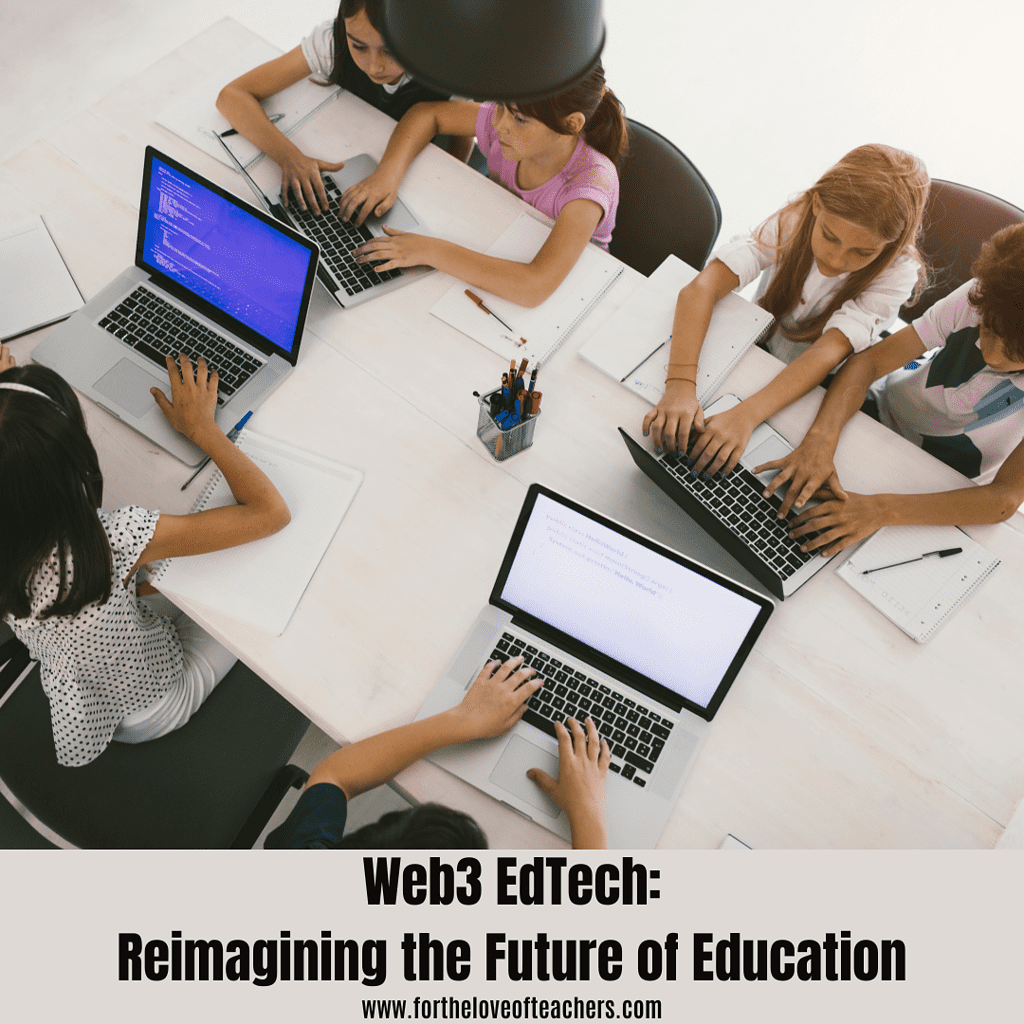Technology and education are two things that go well together. For the past years, educational institutions have incorporated technology to enhance the classroom experience. And so far, it has shown nothing but great promise. One of the major edtech trends to do so is Web3. You might be thinking: Web3? Isn’t that just crypto? The reality is, it’s a lot more than that. Let’s get to know what Web3 actually means.
What is Web3?
Web3 – it’s one of the biggest buzzwords that we hear today. Web3 succeeded the previous iterations of the Internet – Web1 and Web2. Those are now things of the past. Web3 is the present. So, what exactly is Web3 all about?
Web3 is all about decentralization. That means it’s all about blockchain, smart contracts, and peer-to-peer networks. At its core, Web3 is all about transparency. Unlike the current centralized form of the Internet, Web3 aims to allow users to own their data. At the present, many centralized entities own your data and your digital identities. The goal of Web3 is to change that. Because of this, we could see a more private and secure version of the internet. This opens many doors for innovation across industries.
The Impacts of Web3 on EdTech
One industry in particular that can benefit from Web3 is education. At first, it might be hard to see how these two things could be connected to each other. But in reality, the impacts of Web3 in the educational sector are plenty. Here’s how it could revolutionize the education landscape.
Decentralization of Content
One thing will be changing in the education landscape is the decentralization of content. Centralized authorities will not be the only ones who can control the data, learners can do so, too. This encourages the sharing of ideas and peer-to-peer learning. Hence, this allows students not just to become passive learners, but also active contributors. This hones their practical skills and expands their knowledge.
The Metaverse
Metaverse this, metaverse that – the metaverse is everywhere! In case you haven’t kept up with the trends, the metaverse is like a 3D model of the internet. It’s an environment that simulates real-world experiences – think shopping or even hanging out with our friends. Now, you might have an idea where this is going. Teaching and learning can be done in the metaverse, too! One of the known platforms used today is Metaschool. And with the rapidly-evolving Web3, there are many platforms that are still under development.
It enhances classroom productivity by allowing students and teachers to interact like never before. The thing about the metaverse is that your limitation is your imagination. You can step into different worlds. For instance, students can step into the world of the 19th century and learn about how significant historical events have transpired. Alternatively, students can be taken to another world and learn about how social issues like climate change could impact our environment.
There’s also the talk about how the metaverse could collect data, data that could be crucial in improving the learning experience. Teachers gain insights into their students’ learning behavior and as a result, identify their knowledge gaps. Additionally, one could determine how effective their teaching methods are from metaverse data, which further boosts the classroom experience.
Increased Accessibility
The traditional educational system involves a model wherein students and teachers have to meet in an educational institution for the learning experience. This kind of setup doesn’t work for everyone, making education still inaccessible to millions of children all over the globe. Some cannot afford to go to school and others have to deal with location issues. Fortunately, Web3 eases accessibility issues among learners of all ages.
Thanks to decentralized autonomous organizations (DAO), students and teachers can benefit from a decentralized learning experience. DAOs serve as learning centers where students can enroll depending on their interests. Other than that, DAOs provide a voice to students. A major issue in educational institutions today is how policies aren’t always student-first. With DAOs, students have their own say in critical issues.
More Affordable
As mentioned earlier, many students still cannot afford to go to school. Even more so when the costs of education are still on the rise. Some are forced to take gap years or discontinue their education altogether due to financial constraints. Because Web3 is permissionless, you don’t necessarily need to enroll in gated institutions to gain access to educational resources. This saves costs and at the same time, there’s no need to relocate for a better educational experience.
In Conclusion
The future is here, and Web3 has barely even scratched the surface. While it’s still in its nascent stages, it’s already showing signs of great promise in the field of education. From the decentralization of data to the metaverse, it’s easy to see why the education sector can benefit from Web3 technologies. And as it’s poised to only get better from here, we can say the same for the education landscape, too.
What do you think about this developing technology for education? Share in the comments!
About the Author: Bash Sarmiento is a writer and an educator from Manila. He is currently finishing his Doctor of Education degree at Miriam College. Bash writes laconic pieces in the education, lifestyle, and health realms. His academic background and extensive experience in teaching, textbook evaluation, business management, and traveling are translated into his works.
Thanks for reading!
If you like it, then pin it!

Christine Weis is a passionate educator, classroom management coach, wife, and mom of two busy boys. She enjoys teaching, writing, and creating resources for teachers.







I’m learning more about Web3 and your article truly gives me more ideas.
This is such an interesting perspective on the intersection of technology and education! It’s exciting to think about how Web3 could transform the way we approach learning and teaching. I’m curious to know more about the specific ways in which this technology could be implemented in the education sector.
Increased productivity can really help to maximize time. I think it’s a great thing, and I’d never heard of Web#, either. So interesting!
Truly, i think a lot of things have changed in the learning system since ive been in school. Looks like its better for the kids!
I’ve read about web3 but didn’t know that much about it. This was an interesting read to know about it. Thank you for sharing!
Technology is they way in our world and bringing it into the classrooms and preparing our youth seems smart.
I love that we are able to use so much technology in schools. I’m very thankful we live in a state that allowed our children back in school starting Fall 2020 but I know some kids who are still learning virtually (by choice) through a program in our district. When you are involving children, security is so important!
I couldn’t agree more! The possibilities that Web3 technologies bring to the table for education are fascinating. I can only imagine how much more accessible and engaging learning can become with the decentralization of data and the immersive experiences of the metaverse. It’s an exciting time to be a part of the education landscape.
Metaverse, that sounds very intriguing, it’s the first time I am hearing about this, thanks for explaining everything so clearly, that’s very helpful.
I love that more and more kids are using the technology we have available to learn in schools. And teachers are able to access so much more! Canva, for example, even has an education section that I allow my sister to use (on the pro edition). It helps her in regard to printouts, designing her own lesson plans etc.
I’m all for technology in every aspect of life and education. Although Web3 is new to me, it sounds like a great advancement that is helpful.
I like to think that I keep up with technology as much as the next guy, but I haven’t heard of Web3 before. I guess I have some more learning to do.
The future really is now. With so many advancements in technology, education is becoming more and more interactive.